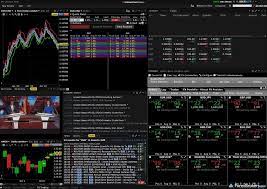In the dynamic world of forex market , mastering the art of technical analysis is crucial for traders seeking to navigate the markets with precision and confidence. Technical analysis involves the study of historical price data and chart patterns to forecast future price movements. By examining price trends and identifying key patterns, traders can make informed decisions about when to enter or exit positions. In this article, we delve into the intricacies of technical analysis in forex trading and explore how it serves as both a science and an art.
**Understanding Technical Analysis:**
Technical analysis revolves around the belief that historical price movements and patterns tend to repeat themselves. Traders use charts and technical indicators to identify trends, support and resistance levels, and potential reversal points. Unlike fundamental analysis, which focuses on economic factors, technical analysis is primarily concerned with price action and market sentiment.
**1. Candlestick Patterns:**
Candlestick patterns are essential elements of technical analysis. Traders interpret patterns like doji, engulfing, and hammer to gauge market sentiment and potential trend reversals. The art lies in recognizing the subtle nuances of these patterns and understanding the psychology behind each candlestick formation.
**2. Support and Resistance Levels:**
Identifying support and resistance levels is a fundamental aspect of technical analysis. Support represents a price level where buying interest tends to emerge, while resistance is a level where selling interest is prevalent. The artistry lies in interpreting these levels within the broader context of market dynamics.
**3. Trend Lines:**
Drawing trend lines helps traders visualize the direction of a market trend. The art of trend lines involves connecting consecutive lows in an uptrend or highs in a downtrend. Traders use trend lines to identify potential entry points that align with the prevailing market trend.
**4. Moving Averages:**
Moving averages smooth out price data to reveal underlying trends. Traders use simple moving averages (SMA) and exponential moving averages (EMA) to identify trend direction and potential reversal points. The art lies in choosing the right combination of moving averages based on the trader’s preferences and market conditions.
**5. Relative Strength Index (RSI):**
The RSI is a momentum oscillator that measures the speed and change of price movements. Traders use RSI to identify overbought or oversold conditions, indicating potential trend reversals. The artistry lies in interpreting RSI values in conjunction with other technical indicators for a comprehensive analysis.
**6. Fibonacci Retracement Levels:**
Fibonacci retracement levels help traders identify potential reversal levels in a market trend. The art of using Fibonacci retracements involves applying these levels to charts and recognizing key support or resistance areas. Traders often combine Fibonacci analysis with other technical tools for a more nuanced approach.
**7. Bollinger Bands:**
Bollinger Bands consist of a middle band being an SMA, and upper and lower bands representing standard deviations from the middle band. Traders use Bollinger Bands to identify volatility and potential overbought or oversold conditions. The art lies in interpreting the width of the bands to assess market volatility.
**8. Continuous Learning and Adaptation:**
The art of technical analysis is a continuous learning process. Markets evolve, and new patterns emerge. Successful traders continually refine their technical analysis skills, adapting to changing market conditions and incorporating new tools and techniques into their strategies.
In conclusion, the art of technical analysis in forex trading blends scientific analysis with interpretative skill. Traders who master this art gain a deeper understanding of market dynamics, enabling them to make well-informed decisions. As traders hone their skills, technical analysis becomes not just a tool but a personalized approach to decoding the intricate language of the forex markets.



